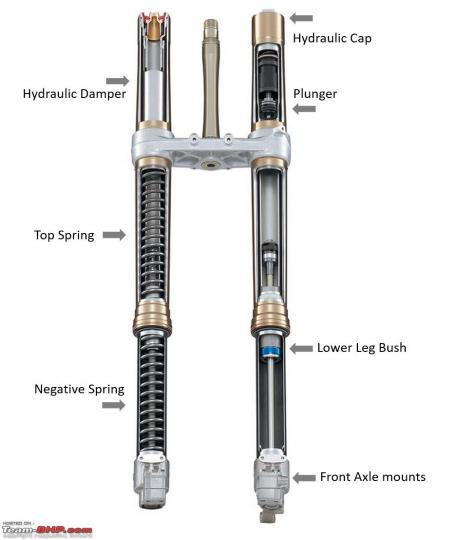News
How fully-adjustable suspensions on motorcycles work
The front forks are mechanically linked between the wheel axle and the triple clamp.
BHPian phoenix.rider recently shared this with other enthusiasts.
I have all the theoretical knowledge about pre-load, rebound damping and compression damping but I have one question.
On most bikes, we get rebound adjustment on one fork and compression adjustment on another fork but how does changing the setting on one fork make adjustments on another fork?
Here's what BHPian NoSugarNoSpice had to say on the matter:
It does not. The front forks are mechanically linked between the wheel axle and the triple clamp. When leaning over, the forks stay the same length, since the axle and triple clamp stay parallel. What one fork does, the triple clamp makes the other one do. So the rider does not perceive any independent feedback. Coming to adjustable suspension, these are the parameters that are generally adjustable:
Spring
- Preload
Damping
- Compression
- Rebound
- High-Speed
- Low-Speed
Now remember the forks are 'clamped', so what one fork leg does, the other will ape it. Some engineers got the genius idea to have one fork do the springing stuff and the other one do the damping stuff. Turns out it's a bit more robust and even cheaper and a hell of a lot simpler. And these were aptly christened Separate Function Forks.
Now, this may not always be the case. Some manufacturers are ok with duplication since it saves them the hassle of making, maintaining and stocking twice the number of fork internals. Maybe, they think printing a warning in the manual saying it's the rider's responsibility to keep both fork settings the same otherwise it may lead to loss of life or limb, is fine. Maybe they don't want all the back and forth(pun intended) with a customer when the dealership jams 2 spring legs on his bike.
Check out BHPian comments for more insights and information.
- Tags:
- Indian
- Member Content
- Suspension
- Bike


















